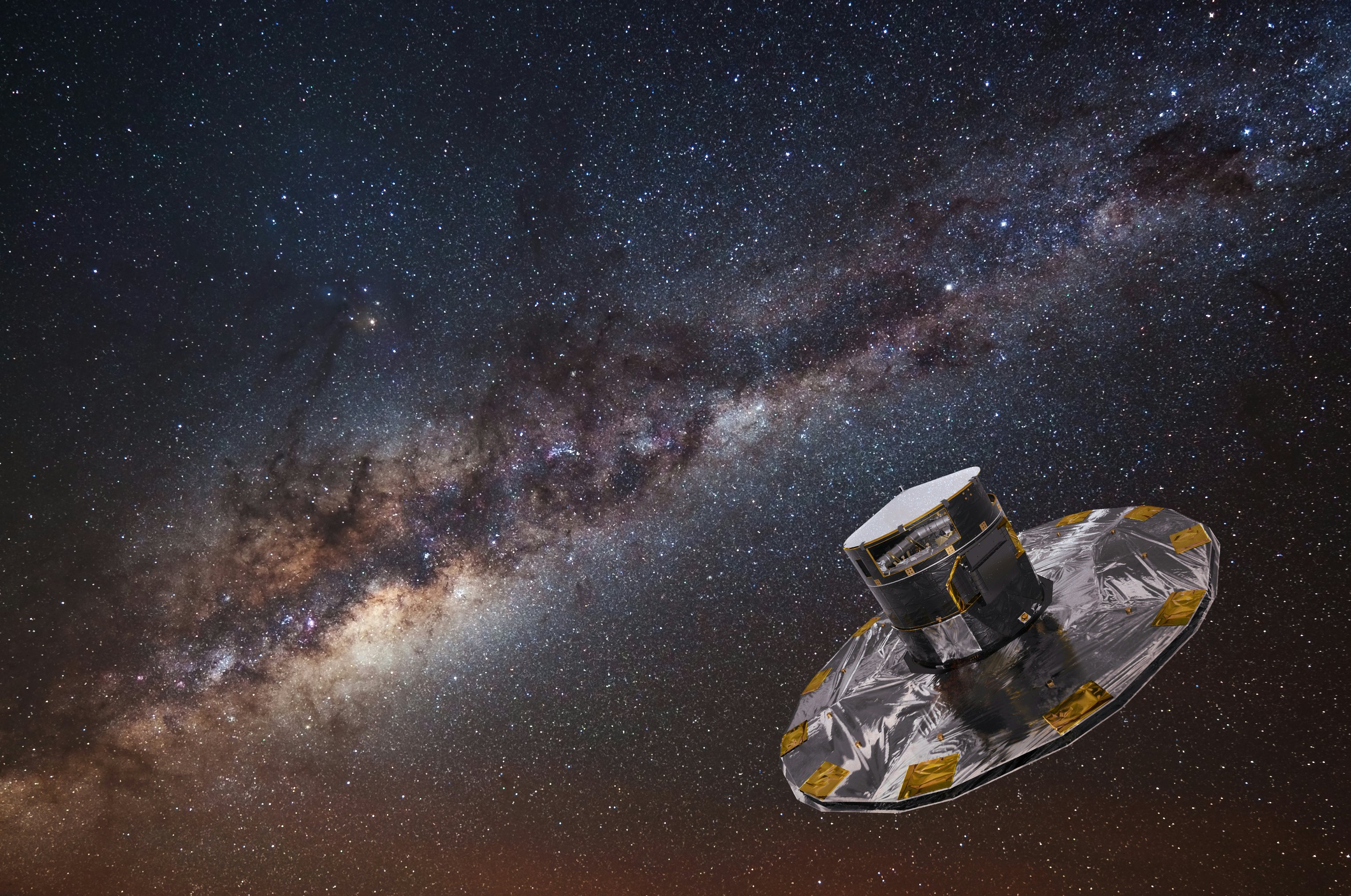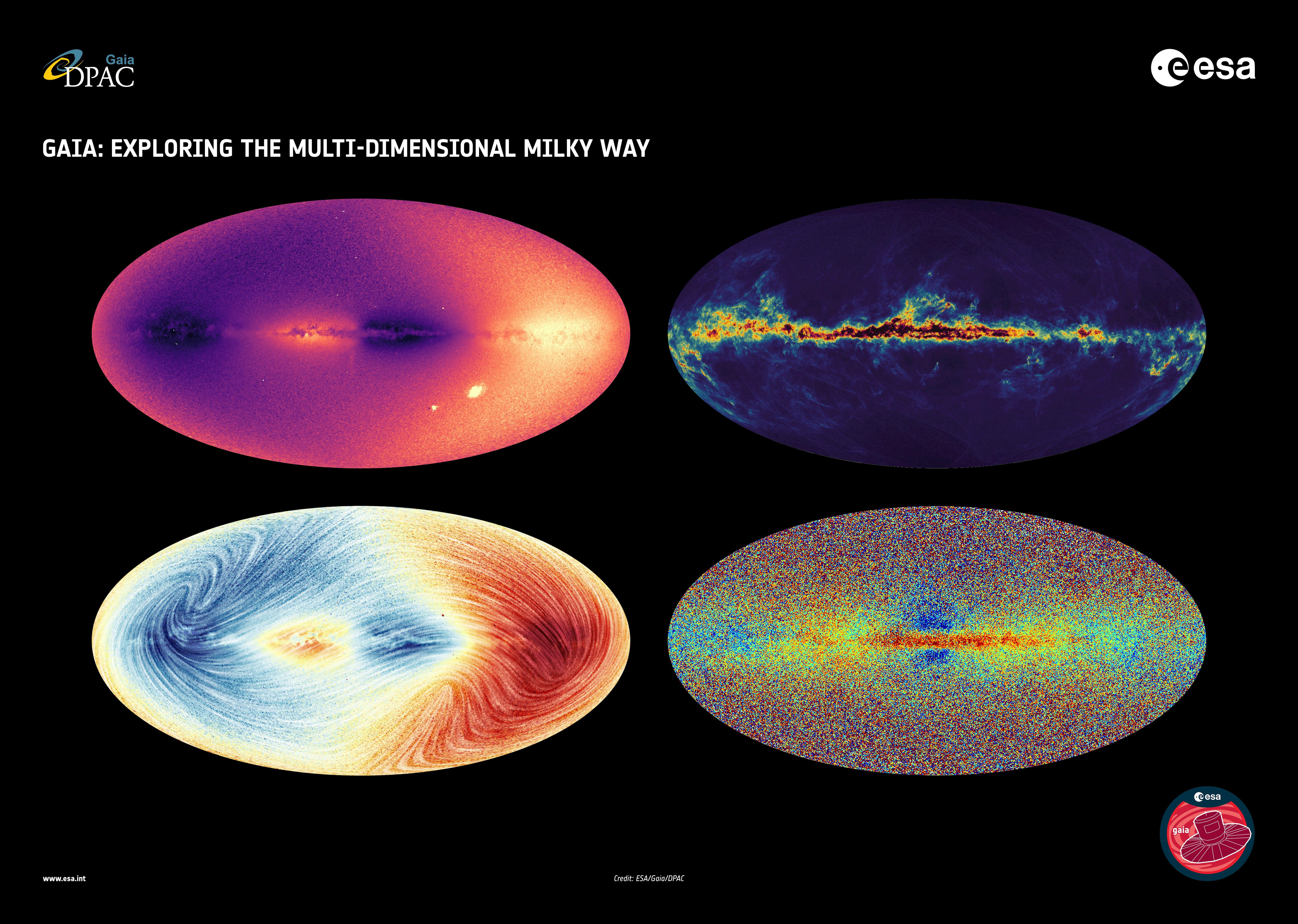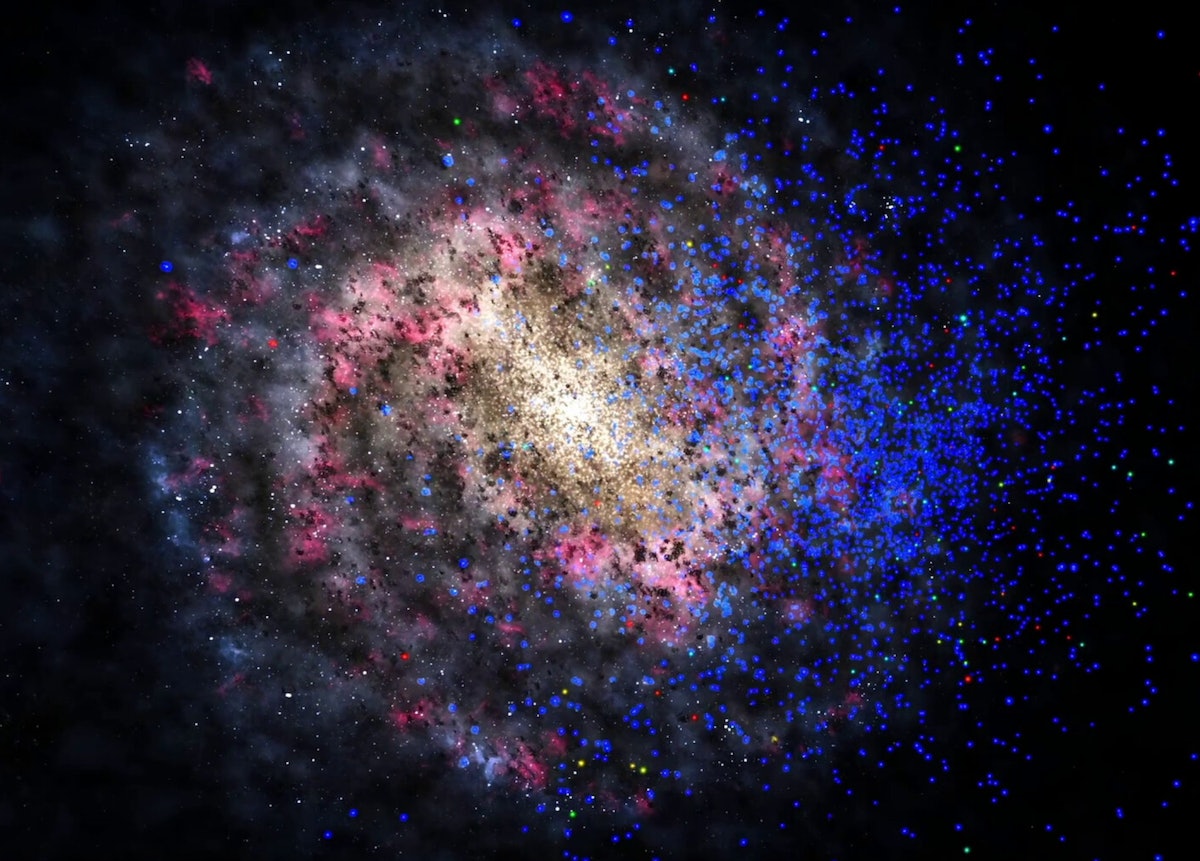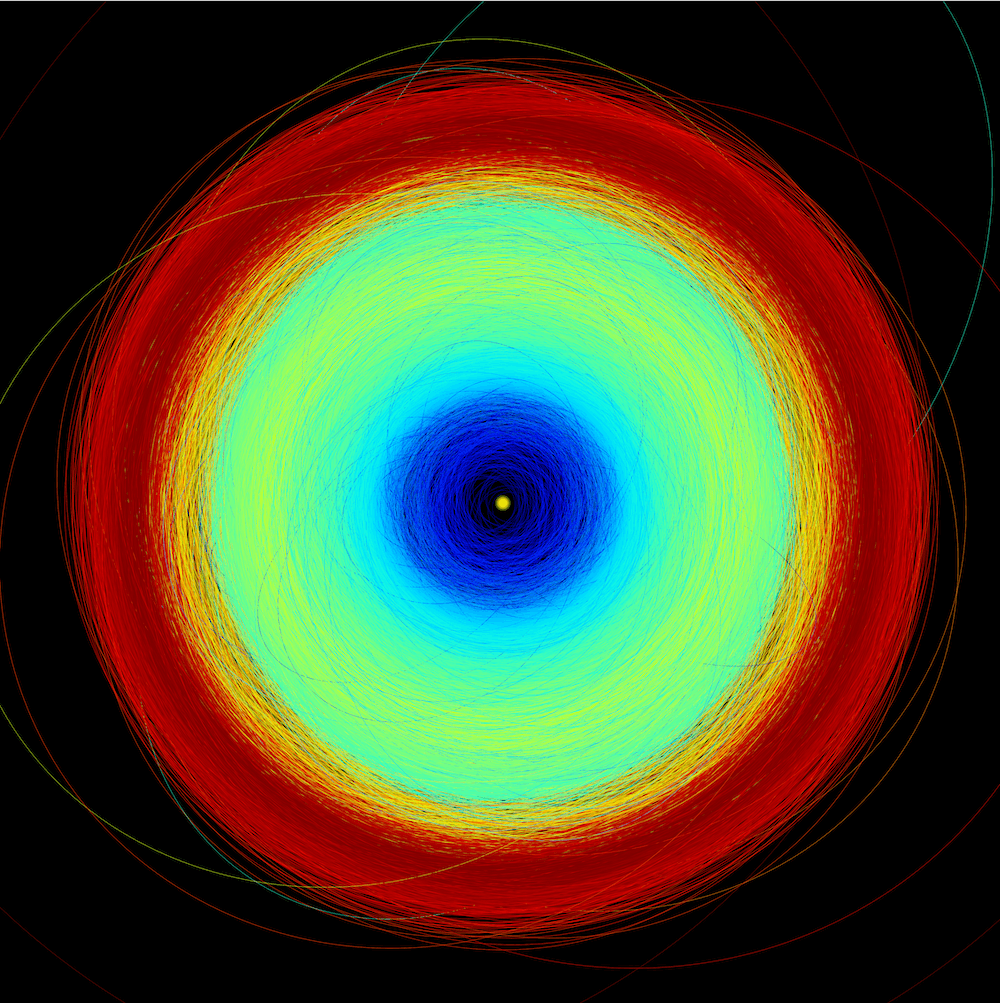
The European Space Agency released a trove of data about the night sky on Monday, June 13. The haul, which equates to 10 terabytes worth of data, encompasses information on the positions of stars, hints to unexplored exoplanets, new knowledge about thousands upon thousands of asteroids, whispers of distant quasars, and more.
The data comes courtesy of the Gaia mission from the European Space Agency, which is a space-based observatory whose job is to survey the entire sky. Gaia tracks the positions of stars of the Milky Way and captures observations of other objects along the way. It has surveyed almost 2 billion objects to create the most accurate 3D map of our galaxy to date.

What’s new — The new haul of data, the third release from Gaia to date, will teach us about what stars are made of and how fast they are moving.
You can learn a fantastic amount about a far-off star just by looking at the light it gives off. When light hits a prism, it is split into a rainbow of colors — when light passes through chemicals in a star’s atmosphere, it does a similar thing.
“This is the same principle that has applied onboard Gaia,” explained Gaia astrophysicist Giorgia Busso of the University of Cambridge at a press conference on Monday following the data release.
Gaia has an instrument onboard called the Radial Velocity Spectrometer, which uses a technique called high-resolution spectroscopy to find clues to a star’s composition.
“It takes the light from each star and splits it up into a range of colors, and projects those on an array of detectors,” said fellow researcher Mark Cropper of the Mullard Space Science Laboratory at the same press conference.
When you plot out the amount of light coming from the star at different wavelengths, you see dips where light is being absorbed — and the positions of these dips are related to particular elements, like calcium, iron, or titanium.
“The strength of these dips will tell you a lot about what the star is made of,” Cropper explained.
Why it matters — Astronomers categorize stars into groups based on their composition, which they refer to as metallicity. Some stars contain more heavy elements than our Sun, and some contain less. When a star dies, it releases the elements it contains out into space, becoming the building blocks for new stars. Over time, the level of heavy elements increases, so younger stars generally have higher metallicity than older stars.
That means that by tracking the metallicity of stars, researchers can track the evolution of stars and learn about their origins.
Astronomers have already spotted one oddity in the new Gaia data: starquakes. Unexpectedly, Gaia can pick up jiggles on the surface of a star which change its shape by a small amount. Stars are not perfectly round, but can change their overall shape by a small degree when tsunami-like waves ripple across their surfaces.
ESA didn’t design Gaia to investigate the shapes of stars, but researchers have managed to pick out these changes in the data anyway. And something odd is that they’ve found these quakes in stars which they didn’t expect to show them, meaning we have more to learn about how stars work. Scientists can look at how quakes move through stars to learn about their internal structure, similar to how we use earthquakes to learn about our planet's interior.
“Starquakes teach us a lot about stars, notably their internal workings,” said team member Conny Aerts of the KU Leuven Institute of Astronomy. “Gaia is opening a goldmine for ‘asteroseismology' of massive stars.”

Digging into the details — Scientists have already used the new Gaia data to create an animation showing the composition of the stars observed by Gaia, from relatively close to the spacecraft and zooming in toward the center of the galaxy.
The animation shows the higher rate of metals in stars in the center of the galaxy and has even identified some stars which, based on their composition, come from galaxies outside the Milky Way.
“This animation is turning science fiction into science fact,” said Gaia scientist George Seabroke of University College London, by allowing scientists to zoom through the Milky Way and see the composition of the stars there.
“Gaia is really giving us the toolkit to understand the Milky Way.”
Gaia doesn’t only look at the composition of stars, though. It also looks at their temperature, mass, age, and motion. By looking at a technique called radial velocity, scientists can see the speed at which a star moves toward or away from us. That means they can track how the galaxy moves and evolves, which lets them model the Milky Way over time.
“From doing this, we can rewind what the galaxy is like now to find out what it was like in the past, and also fast forward it into the future,” said researcher Dafydd Evans of the University of Cambridge at the press conference.
What’s next — Aside from a novel avenue of research in astroseismology, Gaia’s new data also opens the door to fresh understanding of other cosmic bodies like asteroids.

The ESA uses Gaia to observe:
- Objects in the asteroid belt between Mars and Jupiter
- Trojans which sit in the orbit of Jupiter
- Asteroids that come close to Earth
Over 150,000 asteroids have been tracked by Gaia, with their positions and orbits recorded. And even though asteroids don’t give off any light, they reflect sunlight. Astronomers can analyze this light to find out about the composition of asteroids and get information about their shape and rotation.
Astronomers can even use Gaia data to learn about exoplanets by looking at the dips in a star’s brightness that occur when a planet passes in front of it as well as changes in the position of the star they orbit. Astronomers can also use it to study pairs of binary stars, quasars, and even other galaxies like the nearby Andromeda galaxy.
As Gaia looks at the whole sky, it picks up data on a huge range of phenomena, even things we didn’t know about before.
“While surveying the entire sky with billions of stars multiple times, Gaia is bound to make discoveries that other more dedicated missions would miss,” said project scientist Timo Prusti of the European Space Agency, at the press conference.
“We can’t wait for the astronomy community to dive into our new data.”







